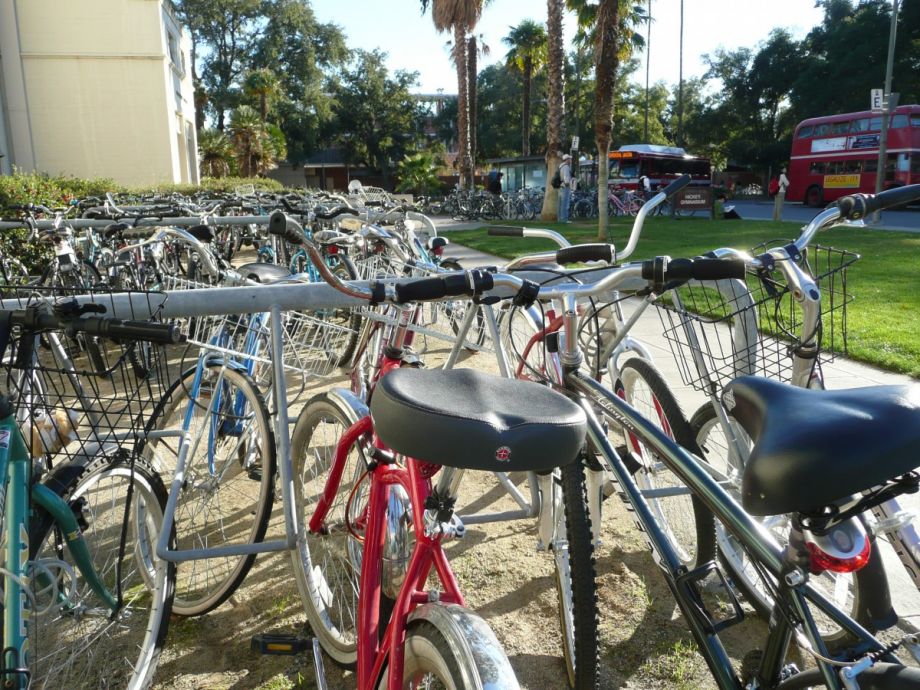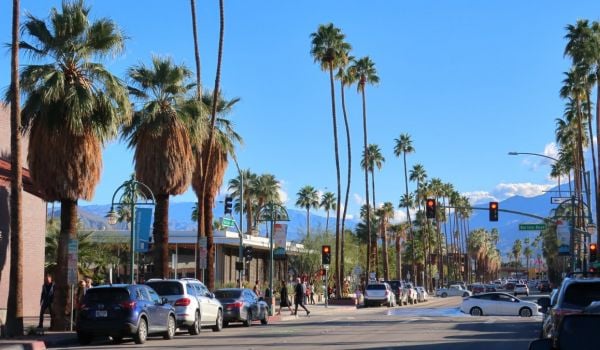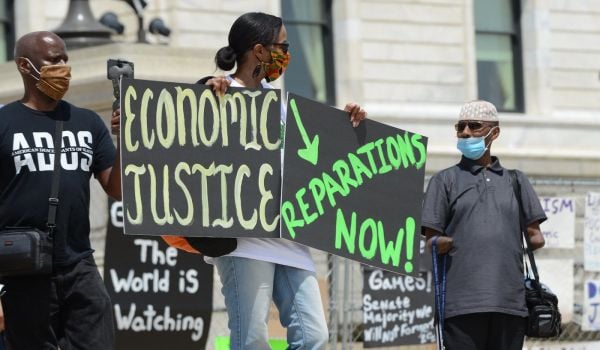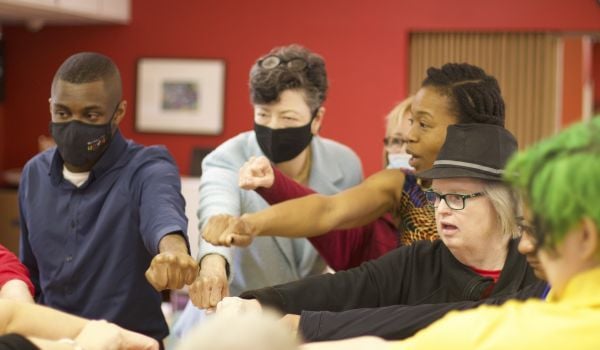Davis, California, isn’t the place to be on national Bike to Work Day.
“We set up a breakfast for bike commuters at the park,” says David Takemoto-Weerts, bicycle program coordinator for UC Davis. “Some people stop and eat bagels, but then you look out in the street, and you’ll see hundreds of cyclists just passing on their way to work.”
Translation: Cycling isn’t a once-a-year novelty in the small city, which boasts the country’s highest percentage of bike commuters. According to the League of American Bicyclists, 23.2 percent of Davis’ population bikes to work. That’s roughly three times the percentage of commuters in Portland, Oregon (although because of Portland’s population size — 609,000 compared to Davis’ 66,000 — more people overall travel by bike in the northwestern city). It towers over the national average of 0.6 percent.
Many factors, including a mild climate and flat topography, contribute to that high percentage, but one has particular relevance right now. Several weeks ago, Philadelphia and Paris each closed part of their downtowns to cars. Soon afterward, a Change.org petition calling for more “open streets” weekends in Philadelphia launched and a Slate article urged more cities to try going car free. And Davis did just that — in 1967. For 48 years, 800 acres of the University of California, Davis central campus has been closed to cars.
Technically the university isn’t part of Davis (it abuts the municipality’s southern border), but it is the city’s largest employer. Which means that for roughly 30,000 workers and 35,000 students, a square-mile hub of daily life resembles Philadelphia during Pope Francis’ visit.
Former UC Davis Chancellor Emil Mrak ordered the closure, hoping to encourage cycling. Bike travel had been on the rise in Davis during World War II due to gasoline rationing according to Blake Gumprecht’s The American College Town. Hoping to build on that legacy, the chancellor told architects in 1961 “to plan for a bicycle-riding, tree-lined campus.” He had hundreds of racks installed, and then banned cars.
“Over night, the streets were converted to bike lanes,” says Takemoto-Weerts.
Mrak’s vision seems to have materialized. Commute data is famously limited because only about 16 percent of household trips take place between home and work — and UC Davis’ annual travel survey is evidence of that shortfall. Yes, 23.2 percent of Davis residents commute by bike, but 46 percent of those bound for the campus on a typical weekday use pedal-power to get there. Once on campus, roughly 46 percent of travelers also use bikes to get around.
That’s probably due to the school’s size. At 7,300 acres, it has one of the largest footprints of any California university.
“The campus is very large and spread out,” explains Brian Abbanat, a transportation planner with the City of Davis. “It almost necessitates cycling.”
Of course, UC Davis could have grown independently of the city — a car-free island surrounded by car-centric roads. But both Abbanat and Takemoto-Weerts say that wasn’t the case. In 1967, the same year campus closed to cars, the city began striping bike lanes and even created one parking-protected lane. It became a model for cycling infrastructure, helping to guide statewide policy. Now, bike lanes mark 95 percent of streets, and the city has installed cycletracks, bike paths and a protected intersection.
“Our infrastructure has always evolved alongside that of the university,” Abbanat says.
Because other campuses are closed to cars, you’d think college towns nationwide would be a good source of data on how car-free areas shape the cities around them. But according to Amelia Neptune, manager of the Bicycle Friendly University program with the League of American Bicyclists, it’s not that simple.
“UC Davis stands out in its history of being car free,” she says, adding that while other campuses are closed to cars, few are as large as the California college.
And, again, crediting the campus for Davis’ high commute percentage doesn’t tell the whole story. As Takemoto-Weerts says, many of the things that made Davis what it is are “serendipitous,” from the city’s flat topography to its mild weather and relatively small size.
But as other cities play around with car-free pilots, Davis is at least worth looking at. And it may not be so unique in a few years. According to Neptune, many campuses are implementing innovative bike infrastructure, and drafting programs that discourage car use, especially on larger campuses where pedestrian safety is an issue.
“I expect to see more campuses following those trends,” she says.
The Works is made possible with the support of the Surdna Foundation.

Rachel Dovey is an award-winning freelance writer and former USC Annenberg fellow living at the northern tip of California’s Bay Area. She writes about infrastructure, water and climate change and has been published by Bust, Wired, Paste, SF Weekly, the East Bay Express and the North Bay Bohemian
Follow Rachel .(JavaScript must be enabled to view this email address)







_600_350_80_s_c1.jpg)









